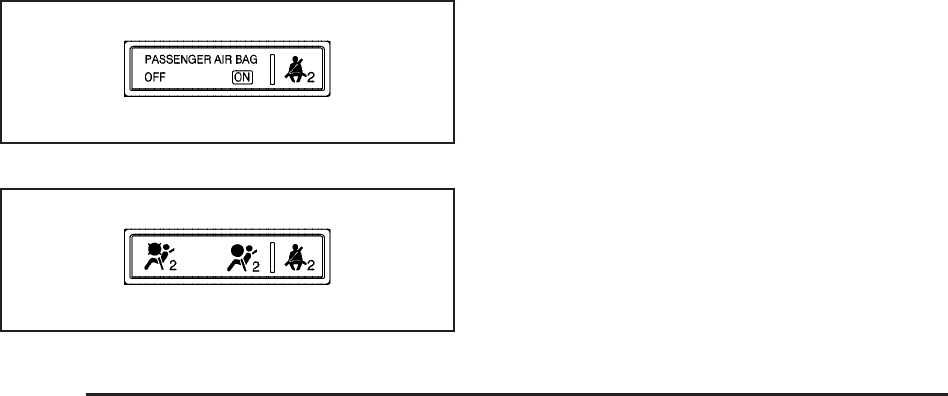
Passenger Sensing System
Your vehicle has a passenger sensing system. The
passenger airbag status indicator on the instrument
panel will be visible when you turn your ignition key to
RUN or START. The words ON and OFF or the symbol
for on and off, will be visible during the system check.
When the system check is complete, either the word ON
or the word OFF, or the symbol for on or the symbol
for off will be visible. See Passenger Airbag Status
Indicator on page 3-33.
The passenger sensing system will turn off the right
front passenger’s frontal airbag and side impact airbag
(if equipped) under certain conditions. The driver’s
airbag or airbags are not part of the passenger sensing
system.
The passenger sensing system works with sensors that
are part of the right front passenger’s seat and safety
belt. The sensors are designed to detect the presence of
a properly-seated occupant and determine if the
passenger’s airbag or airbags should be enabled
(may inflate) or not.
Accident statistics show that children are safer if they
are restrained in the rear rather than the front seat.
General Motors recommends that child restraints
be secured in a rear seat, including an infant riding in a
rear-facing infant seat, a child riding in a forward-facing
child seat and an older child riding in a booster seat.
Your vehicle has a rear seat that will accommodate
a rear-facing child restraint. A label on your sun visor
says, “Never put a rear-facing child seat in the
front.” This is because the risk to the rear-facing child is
so great, if the airbag deploys.
Passenger Airbag Status Indicator – United States
Passenger Airbag Status Indicator – Canada
1-74


















